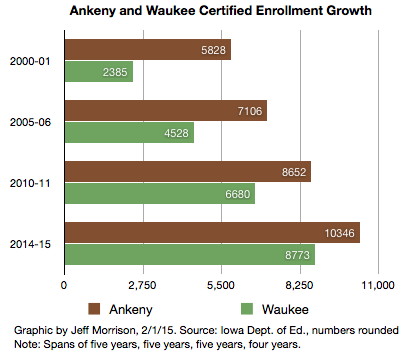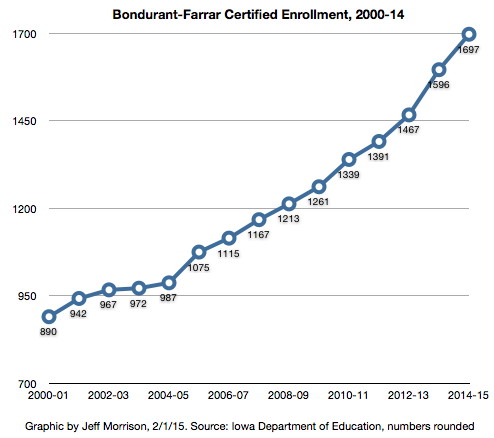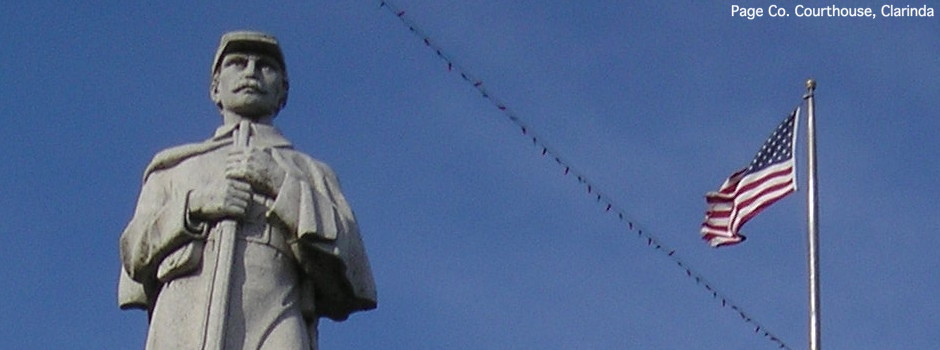The certified enrollment numbers for Iowa’s public school districts were released at the end of last week. While the total is slightly up from last year, the bulk of that growth is concentrated in the state’s largest districts.
Ankeny and Waukee continue to show no signs of slowing down. Those two districts alone account for half of the statewide net gain. In fact, Waukee’s growth is equivalent to North Tama’s entire enrollment. North Tama is among the 60 percent of districts with enrollment under 600 that lost students.

To get the combined student increase of Ankeny (444) and Waukee (484), counting up solely from districts that added students this year (starting with +1), you would need to count about 100 districts. Only 18 districts that were the same in area last year and this year added more than 100 students, period.
One of those adding more than 100 was Bondurant-Farrar, another suburban Des Moines district. In one decade, B-F has gone from the state’s 101st-largest district to the 54th-largest. The Bluejays have hit the jackpot, in more ways than one.

Meanwhile, in rural districts, the slide continues. There are six this year with fewer than 160 students. One (Corwith-Wesley) will not exist next school year, and two others (Prescott and Walnut) may be on borrowed time. Des Moines has more students than Iowa’s 100 smallest districts combined; Ankeny, about the bottom 46 combined. Only seven of the 25 smallest districts that existed when the Class of 2015 started kindergarten will be around for their graduation.
The below graph counts student enrollment for all Iowa districts outside the top 11 (those with enrollment above 7500). As you can see, this data set tells a different story. It has the same small uptick as the state at large, but the overall decline in the first decade of the century is very visible.

